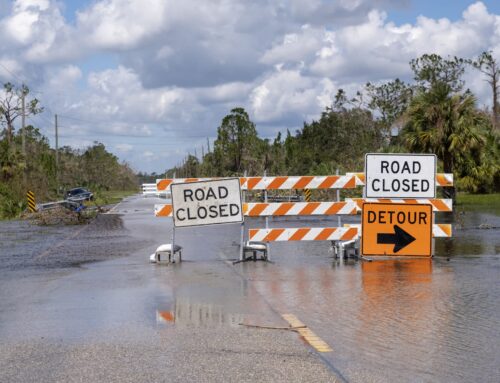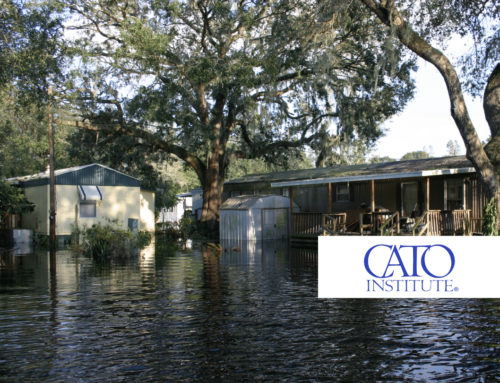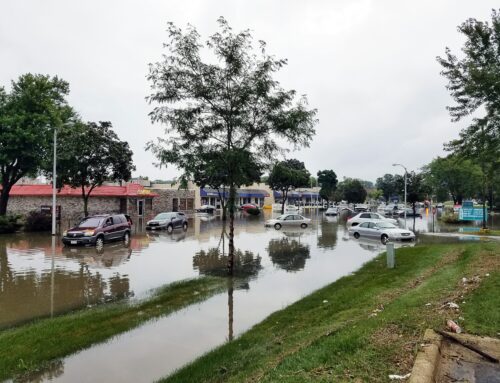Unsurprisingly, the new leadership of the House Financial Services Committee has fired the first volley on National Flood Insurance Program (NFIP) renewal. It’s not surprising because under both Republican and Democratic leadership, the House has repeatedly moved forward on renewing the program while the Senate Banking Committee has repeatedly failed to produce a bill. It’s an important issue for Congress to move on because in 2017 the NFIP had 5.1 million policies in force, generating $3.3 billion in premium revenue and insuring $1.3 trillion in property.
A bit of back story: In 1968, responding to a perceived lack of affordable flood insurance coverage, Congress created the NFIP. Unfortunately, 50 years later, subsidized flood insurance and other federal and state policies have led to unwise floodplain development and concomitant flooding resulting in the program borrowing more than $36 billion from the Treasury to cover shortfalls.
We have long led a bipartisan chorus calling for reforms to this troubled program. Needed steps are reducing excessive subsidies, providing means-tested premium assistance to those who need it, investing in updated mapping of actual flood risk, increased federal and local efforts in mitigating this risk, and shifting more of the risk onto the private sector.
Like the bill from last Congress, the proposals discussed in a hearing this week are a mixed bag.
The Good News
The legislative proposals would authorize the program for another five years, and perhaps most importantly, create a demonstration program on affordability. That is a good entry into the debate. The demonstration program is targeted at properties occupied by households making 80 percent of the area’s median household income. The demonstration would cap premiums at 2 percent of an area’s median income. Policyholders would still be told their full-risk rate – which is important for risk communication – but would not have to cover the full cost.
We would like to measure how this program impacts different parts of the country, and adjustments may be needed. For instance, a voucher could provide the homeowner choice between purchasing private or public flood insurance policies. Also, we need to be sure that the program generates sufficient revenue to not throw the program in deeper debt.
There were also legislative proposals on mitigation and mapping. The mitigation proposal is for a state revolving loan fund that provides federal funds based in part on how many NFIP policies and the amount of paid premium there is in the participating state. In most cases, states would have to provide a 10 percent match to the federal funds, which is far too low. It should be closer to 35 percent, which would more closely mirror the match required by most federally funded flood damage reduction projects. These low interest loans would fund mitigation projects following state-based plans. Even the Clean Water and Drinking Water State Revolving loan funds – which this proposal is supposedly based on – have a 20 percent state match.
The mapping proposal pushes adoption of new technology and more accurate mapping of flood risk. In general, that is good.
The Bad News
Converse to the affordability provisions, the bill does nothing to go after the many subsidies benefiting the wealthy and driving the NFIP’s insolvency. The Government Accountability Office determined that more than 78 percent of the subsidized properties in NFIP are located in counties with the highest home values (top three deciles), while only 5 percent of subsidized properties are in counties with the lowest home values (bottom five deciles). Many of these wealthier households can afford to pay more to protect themselves, or have the funds to live somewhere with less risk. In addition, the CBO found that 85 percent of NFIP-insured properties facing storm surge are subsidized. While some of these properties may be in low income communities or sites with critical national infrastructure, the truth is taxpayers are subsidizing many a weekend beach home.
Currently, properties that were built before flood maps were completed receive subsidized rates. Also, if updated maps move a property from a lower risk zone into a higher risk zone, whether through land use change or documented sea level rise, the homeowners get to keep the premium of the lower risk zone. This is called “grandfathering.” Both should be phased out, particularly the grandfathering.
The bill waves a magic wand and eliminates the program’s hefty debt. To get around budget rules, this is deemed an emergency, which would be funny if it didn’t lock in huge losses for taxpayers. It is quite clear that the NFIP will never be able to pay back the more than $20 billion in remaining debt (even after $16 billion has already been forgiven). But significant reforms must be in place before pressing the reset button. We could easily envision the debt being forgiven then reforms eliminated or watered down in the legislation leaving taxpayers stuck with the costs as losses mount again.
Finally, the legislative package must clarify that in the previous reauthorization Congress meant to allow private flood insurance policies to meet mandatory purchase requirements. This is a proposal that passed House Financial Services unanimously last Congress and passed the House 417-0 the previous Congress.
The Path Forward to Dry Land
Lawmakers need to get this done. And they need to get it done right. The Financial Service Committee has started the ball rolling. It’s time for Senate Banking to do their part to better protect people’s properties and lives.











Get Social